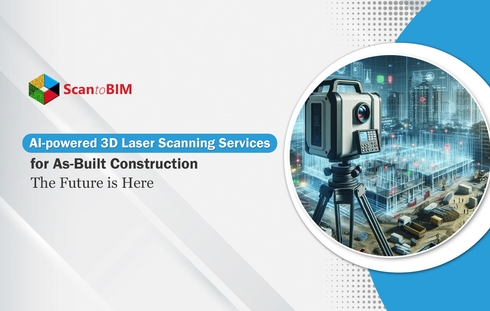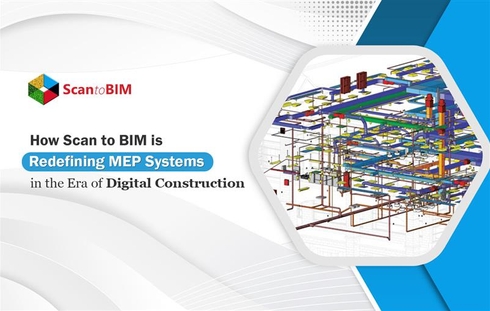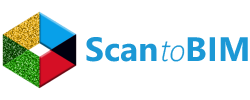
In the modern architecture, engineering, and construction (AEC) sector, technological advancements are reshaping how buildings are designed, constructed, and maintained. As the demand for faster, more accurate project delivery grows, the industry has turned to innovative digital tools to streamline workflows and enhance precision.
The Scan to BIM services, which enables the transformation of extremely detailed 3D scans of existing buildings and environs into data-rich, fully interactive BIM models, is at the center of this evolution.
This conversion provides a precise depiction of the actual area while also incorporating vital details regarding the structural, mechanical, and architectural elements of the building.
These models play a key role in rehabilitation, retrofitting, and facility management, affording stakeholders a detailed digital twin of the real-world building.
Decoding Scan to BIM Services
Scan to BIM is converting laser-scanned data into a detailed, information-rich 3D model. High-density point clouds of an existing physical environment are captured using laser scanning.
The collected data is transformed into a BIM model, including details about the structural parts, mechanical systems, and building features like doors, windows, and walls. The conventional method required manual data extraction and interpretation, which was error-prone and labor-intensive.
With sophisticated scanners that gather millions of data points, these services produce an exact and accurate digital replica of an existing structure. Turning raw point clouds into structured BIM models is difficult and prone to human mistakes, even with high-quality scans due to the volume and density of the collected data.
AI-powered Scan to BIM Services: Inducing Accuracy and Quality
Accuracy is greatly increased in the Scan to BIM workflow through the integration of several improvements brought forth by artificial intelligence (AI). AI algorithms can examine large datasets, automate repetitive processes, and generate predictions based on past data trends.

AI automates Point Cloud to BIM procedures and enhances the accuracy and quality of BIM models in several ways:
AI-Driven Automation in Data Processing
The automation of point cloud data processing is one of the important contributions of AI to the AEC industry. In the past, segmenting point clouds manually, interpreting geometric shapes, and classifying building parts were all necessary steps in creating a BIM model. These jobs can now be automated by AI-powered algorithms, significantly cutting down on time and human error.
Object Recognition and Feature Extraction
The proper identification and categorization of architectural elements from point cloud data is critical to the accuracy of Scan to BIM Services.
From point cloud data, AI-powered object recognition algorithms, such as those built on convolutional neural networks (CNNs), can recognize and categorize objects like doors, windows, and walls.
AI algorithms can distinguish between various components depending on context and geometric properties, having learned from enormous datasets. AI improves feature extraction by identifying minute variations in geometry that might not be immediately noticeable to the human eye.
Enhanced Point Cloud Segmentation
A point cloud is divided into smaller regions or segments, each of which represents a different architectural component. Traditional segmentation approaches relied on predefined criteria and human interpretation; AI-driven techniques are significantly more sophisticated.
AI improves segmentation accuracy by allowing algorithms to learn from large amounts of data. Even in intricate or congested settings, these models can identify different parts within the point cloud and separate them more precisely.
Error Reduction in Manual Interpretation
Errors can occur while interpreting point cloud data manually, particularly when working with huge datasets or complex geometries.
By automating repetitive operations and delivering greater consistency in data interpretation, AI dramatically lowers the margin of error. Algorithms for machine learning can identify abnormalities, fix data discrepancies, and offer feedback that raises the model's accuracy.
AI can also discover regions of data misalignment or gaps by evaluating the data and forecasting such problems before they happen.
Because possible issues are resolved in real-time and before they have an impact on the final model, this predictive capability improves the overall correctness of the 3D Scan to BIM process.
Integration with Scan to CAD Services
Scan to CAD Services refers to converting point cloud data into conventional CAD drawings. By automating the extraction of geometry and dimensions, AI-enhanced workflows may close the gap between point cloud data and CAD models, guaranteeing the accuracy and timeliness of CAD drawings.
Based on the project parameters, AI-driven systems may determine the necessary level of detail (LOD) and generate more precisely both BIM models and CAD drawings. By integrating AI with Scan to CAD Services, as-built documentation is guaranteed to be as precise as possible, offering crucial information for the next design choices.
Enhanced Accuracy with Advanced AI Tool by VBS
With 150+ dedicated architects and engineers, ScantoBIM.online specializes in precise and accurate Scan to BIM services, tailored for architects, surveyors, and engineers. The AI-powered Scan to BIM conversion tool by VBS is known for lightning-fast conversion with reduced human intervention and unparalleled accuracy.
The AI tool converts Scan to BIM 50% faster than any other tool, setting a new standard for 3D laser scanning services in the industry.
The 3D Scan to BIM services with advanced AI tools provide top-grade quality check plugins that examine more than 100 aspects of models converted from scans, ensuring maximum accuracy and supreme quality.
Future Outlook: AI and Scan to BIM Services
AI technology will become progressively more sophisticated in its integration with Scan to BIM processes as it develops further. Project durations will be significantly shortened by this real-time capability, which will also provide instant insights during the scanning process.
Combining AI with other cutting-edge technologies, including augmented reality (AR) and virtual reality (VR), is another exciting trend.
The combination of AR and VR facilitates project teams to view and engage with AI-enhanced BIM models in immersive environments, improving stakeholder engagement and providing intuitive knowledge of complicated structures.
The accuracy and productivity of these procedures are being revolutionized by integrating AI into 3D laser scanning services, enhancing the accuracy of BIM models. It automates data processing, boosts segmentation, improves feature extraction, lowers error rates, and facilitates post-processing validation. AI advancement will significantly enhance Scan to BIM workflows, spurring innovation in the engineering, construction, and architecture sectors.








